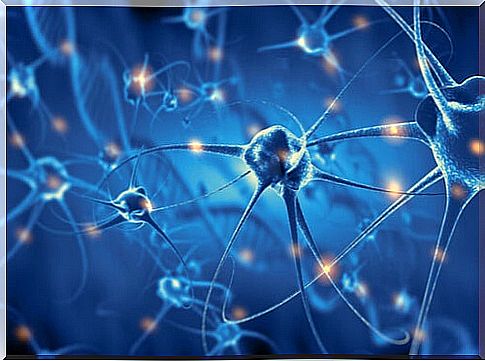What Happens To The Brain When We Exercise?

Exercise has numerous benefits on a psychological, physical and social level. In addition to improving the immune system and preventing certain diseases, it improves mood, self-esteem and physical appearance. Considering it from a physiological point of view, it is beneficial for cardiovascular and respiratory health, but also the brain benefits when we exercise in a considerable way.
Sport intervenes by modulating the secretion of neurotransmitters, chemical cells responsible for communication between neurons. And, on the other hand, it intervenes in neurogenesis, a process by which new neurons are regenerated and created, promoting brain health and proper cognitive functioning. These processes are detailed in more detail below.

Exercise and neurogenesis
Traditionally, aging and certain habits have been thought to lead to neuronal death. However, for a few years now, science has shown that this is not the case. It has been observed that neurons can repair themselves, seek compensatory mechanisms and increase the efficiency of the networks they form. This ability is called brain plasticity and is essential for development, learning, and recovery from various injuries.
Within brain plasticity, in the context of how the brain changes when we exercise, one of the main mechanisms is neurogenesis. The creation of new neurons is not a process that takes place in all areas of the brain. The hippocampus, the olfactory bulb, and the subventricular zone of the lateral ventricle are the areas where this phenomenon occurs.
Over the past decade, researchers have focused their efforts on determining which factors promote neurogenesis and which prevent it. Thus, they have seen that it is promoted by an enriched environment and physical exercise.
How does it happen?
How physical exercise affects neurogenesis is not entirely clear. However, sufficient evidence has been found that BDNF and VEGF levels increase after exercise.
BDNF, or brain-derived neurotrophic factor, and VEGF, vascular endothelial growth factor, are species of proteins that promote neuron survival and blood vessel formation, respectively.
-
BDNF
BDNF has been seen to increase 2 to 3 times in our brain when we do physical exercise and its levels are restored approximately one hour later. The increase in this protein has been related to a 2% annual increase in the volume of the hippocampus, which decreases 1-2% due to age.
In summary, physical exercise increases the expression of the NMDA receptor in neurons of the hippocampus. Activation of these receptors increases calcium levels in the synopsis, in turn causing pathways to be activated that ultimately regulate BDNF protein expression. BDNF, in turn, activates another receptor (TrkB) that is highly present in hippocampal progenitor cells, thus promoting the creation of new neurons.
-
VEGF
Although the mechanism that relates VEGF to neurogenesis is not clear, it has been related to neurogenesis both directly, generating change in neuronal progenitor cells, and indirectly, increasing the number and perimeter of blood vessels.
The increase in blood vessels and their perimeter favor better circulation and, therefore, cellular health. In this way, in the context of how the brain changes when we exercise, it has been seen that it causes an increase in progenitor cells and decreases cell death, modulating the expression of macrophages (cells of the immune system that eliminate foreign substances).

Neurotransmitters
On the other hand, physical exercise causes an increase in several neurotransmitters. For example, there is an increase in catecholamines. Catecholamines are neurohormones that prepare the body to respond to situations of stress, threat, or physical activity.
Within this group are norepinephrine, dopamine and adrenaline. The increase in these substances, and in endorphins, is responsible for making us feel more active when doing physical exercise and increasing our well-being.
There is also a decrease in cortisol, which causes stress to decrease, and thus, the harmful effect that this hormone has on neurons.
Learning and cognitive functioning
The process of neurogenesis, and in general of neuroprotection, described above, takes place mainly in the hippocampus. This brain region is specialized in spatial learning and consolidation of long and short term memory. Thus, in the context of how the brain changes when we exercise, it has been observed in numerous studies that physical exercise on a regular basis improves learning and memory.
Furthermore, it appears that this effect, also due to improved mood and stress reduction, extends to other cognitive abilities, such as processing speed, decision-making and selective attention. Which, in short, relates physical exercise to an improvement in cognitive performance in general.









